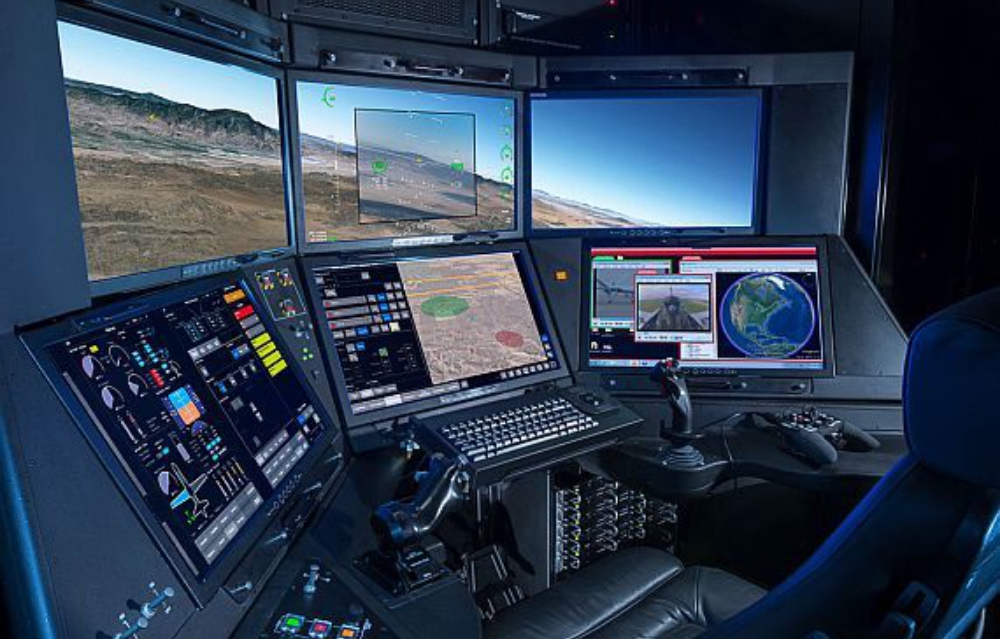Unmanned aerial vehicle (UAV) designers at General Atomics in Poway, California, will provide the U.S. Air Force with four new MQ-9 Block 5 Reaper attack drones and four mobile ground-control stations under terms of a $123.3 million contract announced last week.
Officials of the Air Force Life Cycle Management Center at Wright-Patterson Air Force Base, Ohio, are asking General Atomics Aeronautical Systems segment to provide these four armed Reaper UAVs and their ground-control stations, which are variations of the General Atomics MQ-1 Predator UAV.
The latest version of the Reaper — the MQ-9 Block 5 — is designed for surveillance and attack missions using a suite of airborne sensors and the AGM-114 Hellfire air-to-ground missile. Ground crew monitor and control the UAV in its ground-control station, including firing weapons.
General Atomics refers to the Reaper Block 5 as the Predator B, which has been in production since 2013. Users are the U.S. Air Force and the British Royal Air Force. Other MQ-9 Reaper users are France, Italy, The Netherlands, and Spain.
Compared to the MQ-9 Reaper Block 1 models, the Reaper Block 5 unmanned aircraft has increased electrical power, secure communications, auto land, increased gross takeoff weight, weapons growth, and streamlined payload integration capabilities. Pilots traveling with the Reaper use the mobile ground control station to launch and land the aircraft, while U.S.-based pilots handle most of the flying and weapons delivery.
The Reaper has a high-capacity starter generator and upgraded electrical system with a backup generator that can support all flight-critical functions. The drone has three independent power sources to accommodate new communications such as dual ARC-210 VHF/UHF radios with wingtip antennas for simultaneous communications among multiple air-to-air and air-to-ground parties; secure data links; and an increased data transmission capacity. The Reaper Block 5 can carry heavier payloads or additional fuel.
The turboprop-powered, multi-mission Reaper armed drone can fly for more than 27 hours between refueling at speeds to 240 knots at altitudes to 50,000 feet. The medium-endurance UAV can carry payloads as heavy as 3,850 pounds, including 3,000 pounds of external stores like Hellfire missiles.
The Reaper can carry as many as four Hellfire missiles, two GBU-12 Paveway II laser-guided bombs, or two 500-pound GBU-38 Joint Direct Attack Munitions (JDAMs). Twice as fast as Predator, the Reaper carries 500 percent more payload and has nine times the horsepower, General Atomics officials say.
The Reaper has a fault-tolerant flight control system, triple-redundant avionics system, and is powered by the Honeywell TPE331-10 turboprop engine, integrated with digital electronic engine control (DEEC) to improve engine performance and fuel efficiency at low altitudes.
The Reaper cab carry electro-optical and infrared (EO/IR) sensors, Lynx multi-mode radar, multi-mode maritime surveillance radar, electronic support measures (ESM), laser designators, and a variety of weapons.
The sophisticated drone has redundant flight-control surfaces; can fly remotely piloted or autonomously; has a MIL-STD-1760 stores management system; seven external payload stations; C-band line-of-sight data link control; Ku-band beyond line-of-sight and satellite communications data link control; more than 90 percent system operational availability; and can self-deploy or fly aboard C-130 utility aircraft.
On this contract General Atomics will do the work in Poway, Calif., and should be finished by December 2020. For more information contact General Atomics Aeronautical Systems online at www.ga-asi.com, or the Air Force Life Cycle Management Center at www.wpafb.af.mil/aflcmc.
Source: Military & Aerospace

